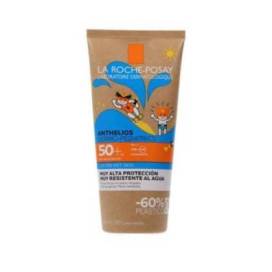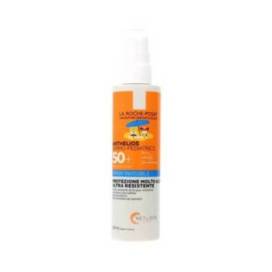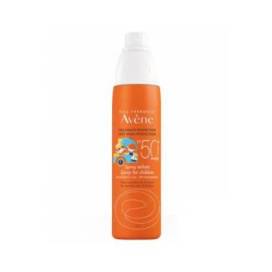No products

Best Baby Sunscreens: Safe and Effective Ingredients
Best Baby Sunscreens: Safe and Effective Ingredients
Baby's skin is extremely sensitive and vulnerable to the harmful effects of the sun. It is essential to choose a suitable sunscreen to protect their delicate skin from UV rays. In this post, we will explore the safe and effective ingredients that baby sunscreens should contain, as well as those that should be avoided. We will also provide tips on how and when to apply sunscreen and other recommendations for sun protection for little ones.
Introduction to the Importance of Sun Protection for Babies
Sun protection is crucial for babies because their skin is much thinner and more delicate than that of adults. Babies have a lower amount of melanin, the pigment that provides natural protection against UV rays. Therefore, they are at greater risk of sunburn and long-term damage, such as skin cancer. A recent study shows that up to 50% of lifetime sun exposure occurs before the age of 18, highlighting the importance of protecting the skin from an early age.
Additionally, sunburns in childhood can significantly increase the risk of developing melanoma in adulthood. Therefore, sun protection in babies not only prevents immediate burns but also plays a crucial role in long-term health.
Recommended Ingredients in Baby Sunscreens
It is essential to choose sunscreens that contain safe and effective ingredients for baby's skin. Recommended ingredients include:
- Zinc oxide: Offers broad-spectrum protection against UVA and UVB rays. It is gentle and suitable for sensitive skin, creating a physical barrier that reflects UV rays.
- Titanium dioxide: Similar to zinc oxide, it provides effective protection and is less likely to cause irritation. It is another mineral filter that works immediately upon application.
- Natural extracts: Ingredients like aloe vera and chamomile can have soothing and protective properties. These ingredients help hydrate and soften the baby's skin, reducing the possibility of irritations.
- Vitamin E: An antioxidant that helps protect the skin from damage caused by free radicals and can improve hydration.
Ingredients to Avoid in Baby Sunscreens
Some ingredients can be potentially harmful to baby's skin and should be avoided. These include:
- Oxybenzone: A chemical filter that can cause allergies and hormonal disruptions. Studies have shown that it can be absorbed through the skin and enter the bloodstream.
- Octinoxate: Can cause allergic reactions and is also associated with hormonal disruptions. Additionally, this ingredient is harmful to marine ecosystems.
- Parabens: Preservatives that can irritate the skin and are linked to hormonal issues. Parabens have been found in cancerous tissue samples, suggesting a possible link to breast cancer.
- Fragrances and alcohol: Can cause irritations and allergic reactions in baby's sensitive skin. Synthetic fragrances often contain phthalates, which can also interfere with hormones.
How and When to Apply Sunscreen on Babies
To ensure optimal protection, it is important to know how and when to apply sunscreen on babies:
How to Apply Sunscreen
- Apply a generous amount of sunscreen to all exposed areas of the baby's body. Don't forget small but important areas like behind the ears and the tops of the feet.
- Make sure to cover difficult areas like ears, neck, and feet. Use gentle movements and make sure not to miss any area.
- Use a baby-specific sunscreen that is broad-spectrum and water-resistant. This is especially important if the baby will be in contact with water or sweating.
- Reapply every two hours, or more frequently if the baby is swimming or sweating. Protection diminishes over time and with water contact.
When to Apply Sunscreen
- Apply sunscreen at least 30 minutes before going out in the sun. This allows the sunscreen to absorb and start protecting the skin.
- Reapply every two hours, especially after swimming or towel drying. Physical activity and contact with clothing can reduce the effectiveness of the sunscreen.
Additional Tips for Sun Protection in Babies
In addition to using appropriate children's sun protection, consider the following tips to protect your baby from the sun:
- Protective clothing: Dress the baby in light, light-colored clothing that covers most of the body. Garments with built-in UV protection are an excellent option.
- Hats and sunglasses: A wide-brimmed hat and sunglasses can protect the baby's face and eyes. Make sure the sunglasses have UVA and UVB protection.
- Seek shade: Whenever possible, keep the baby in shaded areas, especially during peak sun hours (10 a.m. - 4 p.m.). Use umbrellas or beach tents to create shade.
- Hydration: Ensure the baby is well hydrated, especially on hot days. Offer water frequently, even if the baby does not seem thirsty.
- Avoid direct sun: Babies under six months should avoid direct sun exposure as much as possible. Their skin is extremely sensitive and does not yet have enough melanin to protect itself.
Proper sun protection is essential to keep baby's skin healthy and free from damage. By choosing safe products and applying best practices for sun protection, you can ensure your baby enjoys the outdoors safely.



